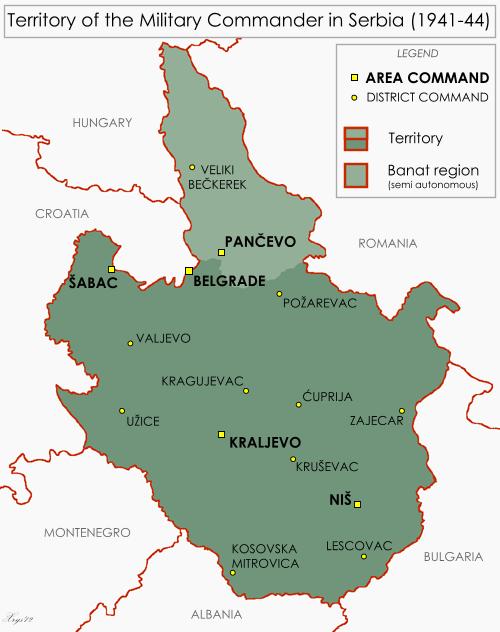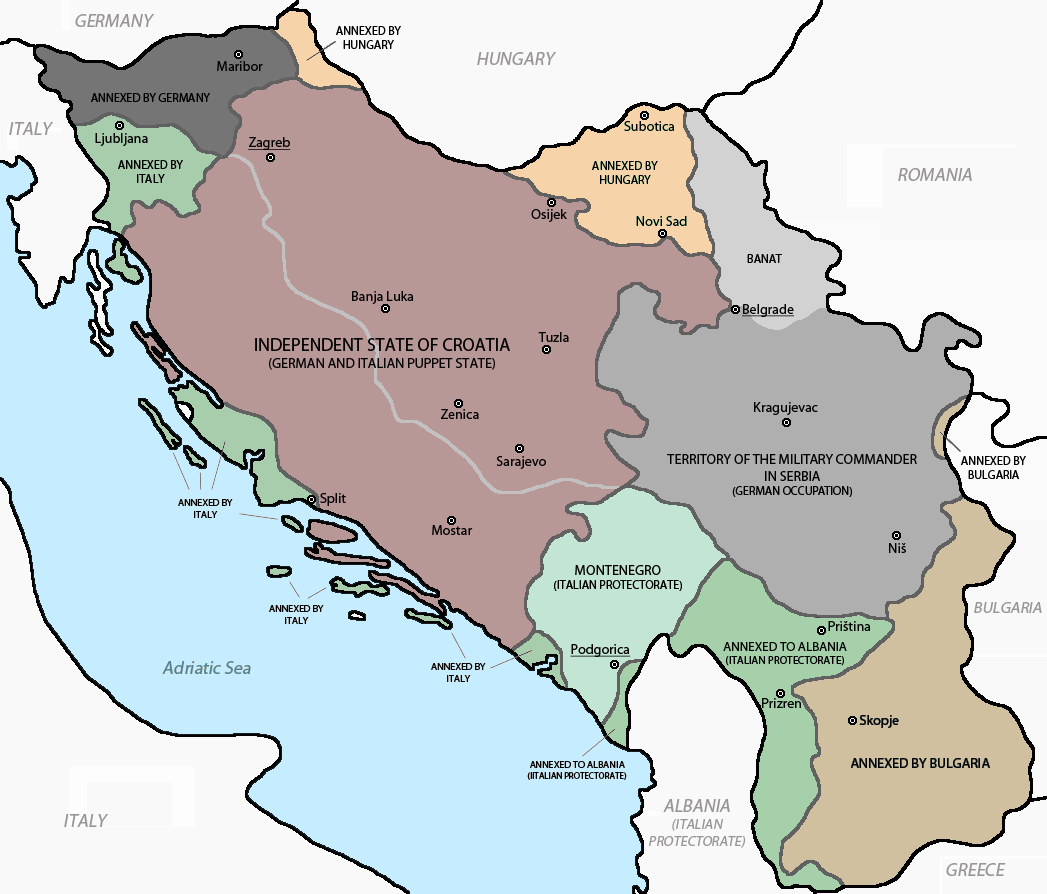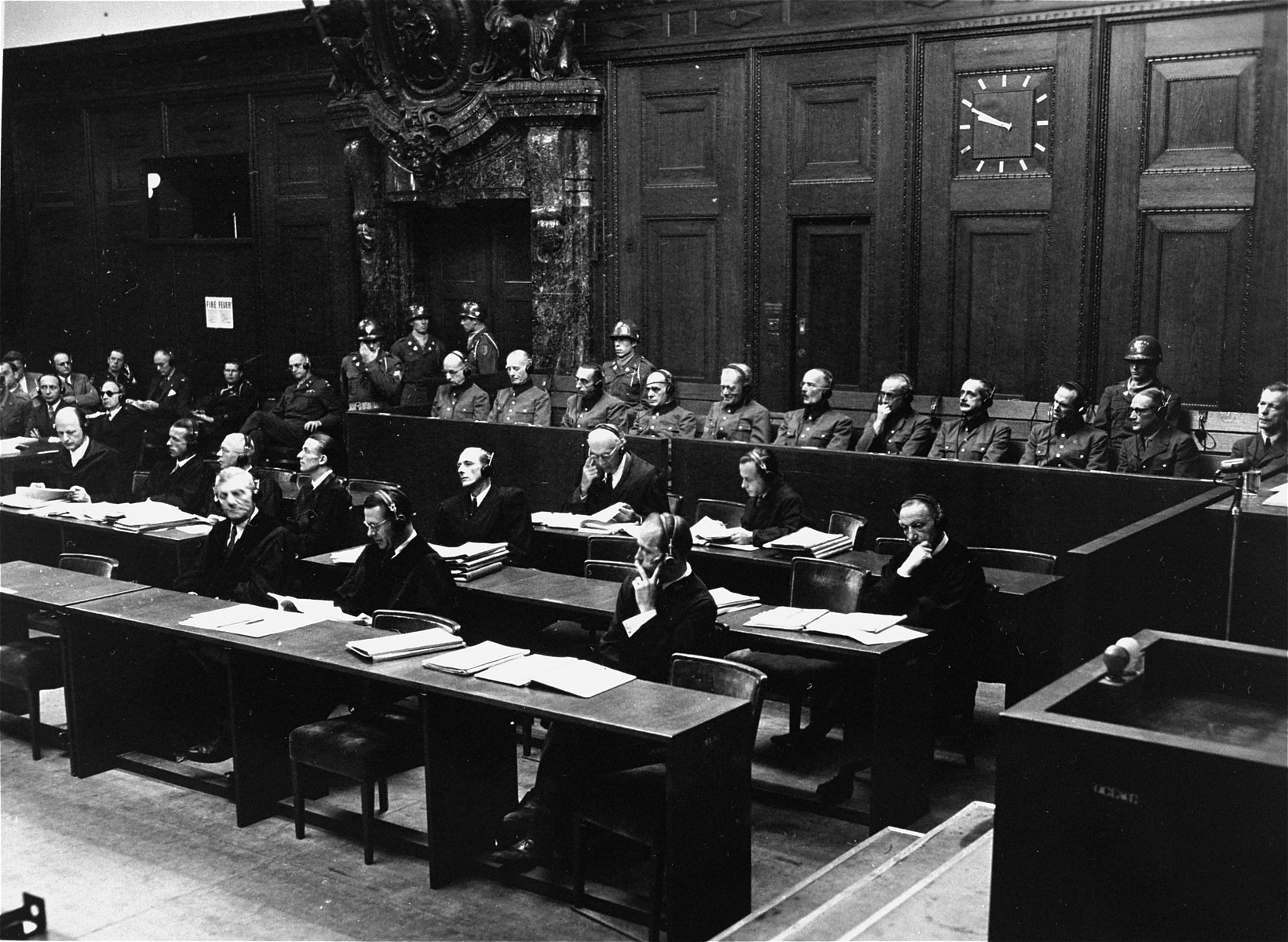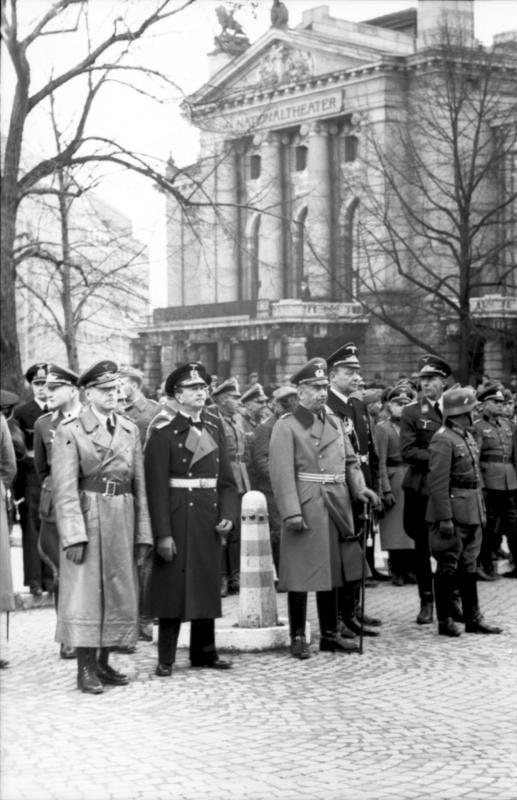|
Franz Böhme
Franz Friedrich Böhme (15 April 1885 – 29 May 1947) was an Army officer who served in succession with the Austro-Hungarian Arny, the Austrian Army and the German Wehrmacht. He rose to the rank of general during World War II, serving as Commander of the XVIII Mountain Corps, Hitler's Plenipotentiary Commanding General (''Bevollmächtigter Kommandierender General'') in the Balkans, and commander-in-chief in German-occupied Norway during World War II. Böhme was arrested for trial by a US Army Tribunal in Nuremberg in the Hostages Trial on a charge of having massacred thousands of Serbian civilians. He committed suicide in prison. Life and career Franz Böhme was born in Zeltweg in Styria, Austria on 15 April 1885. He entered the Austro-Hungarian Army in October 1900 as a cadet and was commissioned as a lieutenant in an infantry regiment in 1905. He served in World War I and remained in the Austrian Bundesheer after 1918, transferring to the Wehrmacht on the Anschlu ... [...More Info...] [...Related Items...] OR: [Wikipedia] [Google] [Baidu] |
Zeltweg
Zeltweg is a town in Styria, Austria. It is located in the Aichfeld basin of the Mur River in Upper Styria. Larger municipalities in the vicinity are Judenburg, Knittelfeld and Fohnsdorf. History Some farms were recorded at Zeltweg in the Duchy of Styria already during the 13th century. The village then was called ''Celtwich'', its name is recorded in 1430 for the first time. During the 15th century, there were considerable difficulties resulting from famines, failed harvests, and epidemics, From 1569 onwards, the Habsburg archduke Charles II of Austria initiated the rafting of timber down the Mur, which gained considerable importance for Zeltweg's history. During the following decades, Zeltweg grew and was a target of migration. During the 18th century, the population shrank considerably because of the expansion of roads. In 1848, Count Hugo Henckel von Donnersmarck, who came from Upper Silesia, decided to relocate his family's smeltery from Carinthian Frantschach-Sankt Gert ... [...More Info...] [...Related Items...] OR: [Wikipedia] [Google] [Baidu] |
20th Mountain Army (Wehrmacht)
The German Lapland Army (''AOK Lappland'') was one of the two army echelon headquarters controlling German troops in the far north of Norway and Finland during World War II. It was established in January 1942, and renamed the 20th Mountain Army (''20. Gebirgsarmee'') in June 1942. On 18 December 1944, the 20th Mountain Army took over the role of ''Wehrmachtsbefehlshaber Norwegen'' from the dissolved Army of Norway. Commanders Commander-in-chiefs Chiefs of staff * Generalleutnant Ferdinand Jodl (22 June 1942 – 1 March 1944) * Generalleutnant Hermann Hölter (1 March 1944 – 8 May 1945) Units April 1942 * 2nd Mountain Division * 6th Mountain Division *7th Mountain Division * 163rd Infantry Division * 169th Infantry Division * 210th Infantry Division *SS Division Nord * Finnish 3rd Division Supporting Units ~ * 211th Panzer Battalion * 741st StuG Battalion *742nd StuG Battalion See also * Army Norway (Wehrmacht) The Army of Norway, also simply Army Norway (german: Armee ... [...More Info...] [...Related Items...] OR: [Wikipedia] [Google] [Baidu] |
Kragujevac Massacre
The Kragujevac massacre was the mass murder of between 2,778 and 2,794 mostly Serb men and boys in Kragujevac, by German soldiers on 21 October 1941. It occurred in the German-occupied territory of Serbia during World War II, and came as a reprisal for insurgent attacks in the Gornji Milanovac district that resulted in the deaths of ten German soldiers and the wounding of 26 others. The number of hostages to be shot was calculated as a ratio of 100 hostages executed for every German soldier killed and 50 hostages executed for every German soldier wounded, a formula devised by Adolf Hitler with the intent of suppressing anti-Nazi resistance in Eastern Europe. After a punitive operation was conducted in the surrounding villages, during which over 400 males were shot and four villages burned down, another 70 male Jews and communists who had been arrested in Kragujevac were killed. Simultaneously, males between the ages of 16 and 60, including high school students, were assemble ... [...More Info...] [...Related Items...] OR: [Wikipedia] [Google] [Baidu] |
Serbia (1941-1944)
The Territory of the Military Commander in Serbia (german: Gebiet des Militärbefehlshabers in Serbien; sr, Подручје Војног заповедника у Србији, Područje vojnog zapovednika u Srbiji) was the area of the Kingdom of Yugoslavia that was placed under a military government of occupation by the Wehrmacht following the invasion, occupation and dismantling of Yugoslavia in April 1941. The territory included only central Serbia, with the addition of the northern part of Kosovo (around Kosovska Mitrovica), and the Banat. This territory was the only area of partitioned Yugoslavia in which the German occupants established a military government. This was due to the key rail and the Danube transport routes that passed through it, and its valuable resources, particularly non-ferrous metals. On 22 April 1941, the territory was placed under the supreme authority of the German military commander in Serbia, with the day-to-day administration of the terr ... [...More Info...] [...Related Items...] OR: [Wikipedia] [Google] [Baidu] |
Battle Of France
The Battle of France (french: bataille de France) (10 May – 25 June 1940), also known as the Western Campaign ('), the French Campaign (german: Frankreichfeldzug, ) and the Fall of France, was the Nazi Germany, German invasion of French Third Republic, France during the Second World War. On 3 September 1939, France French declaration of war on Germany (1939), declared war on Germany following the German invasion of Poland. In early September 1939, France began the limited Saar Offensive and by mid-October had withdrawn to their start lines. German armies German invasion of Belgium (1940), invaded Belgium, German invasion of Luxembourg, Luxembourg and German invasion of the Netherlands, the Netherlands on 10 May 1940. Fascist Italy (1922-1943), Italy entered the war on 10 June 1940 and attempted an Italian invasion of France, invasion of France. France and the Low Countries were conquered, ending land operations on the Western Front (World War II), Western Front until the Normandy l ... [...More Info...] [...Related Items...] OR: [Wikipedia] [Google] [Baidu] |
Invasion Of Poland (1939)
The invasion of Poland (1 September – 6 October 1939) was a joint attack on the Republic of Poland by Nazi Germany and the Soviet Union which marked the beginning of World War II. The German invasion began on 1 September 1939, one week after the signing of the Molotov–Ribbentrop Pact between Germany and the Soviet Union, and one day after the Supreme Soviet of the Soviet Union had approved the pact. The Soviets invaded Poland on 17 September. The campaign ended on 6 October with Germany and the Soviet Union dividing and annexing the whole of Poland under the terms of the German–Soviet Frontier Treaty. The invasion is also known in Poland as the September campaign ( pl, kampania wrześniowa) or 1939 defensive war ( pl, wojna obronna 1939 roku, links=no) and known in Germany as the Poland campaign (german: Überfall auf Polen, Polenfeldzug). German forces invaded Poland from the north, south, and west the morning after the Gleiwitz incident. Slovak military forces a ... [...More Info...] [...Related Items...] OR: [Wikipedia] [Google] [Baidu] |
30th Infantry Division (Wehrmacht)
The 30th Infantry Division (german: 30. Infanterie-Division) of the Wehrmacht was created on 1 October 1936 in Lübeck and mobilized on 26 August 1939 for the upcoming invasion of Poland. At that time, it consisted of the usual German infantry division elements: three infantry regiments of three battalions each, one three-battalion regiment of light artillery, one battalion of heavy artillery, a panzerjager (anti-tank) battalion, an aufklärungs (reconnaissance) battalion, a signals battalion, a pioneer (engineer) battalion, and divisional supply, medical, and administrative units. Just prior to the invasion of Poland, the division was positioned on the left wing of Army Group South under the X Army Corps. It was to attack in the general direction of the area in front of Łódź. It fought battles in areas of Kalisch, during the Vistula crossing at Warta, also at Kol. Balin, Niewiesz and Uniejew. During the Battle of Bzura they suffered heavy losses, including 1500 POWs captured ... [...More Info...] [...Related Items...] OR: [Wikipedia] [Google] [Baidu] |
Anschluss
The (, or , ), also known as the (, en, Annexation of Austria), was the annexation of the Federal State of Austria into the Nazi Germany, German Reich on 13 March 1938. The idea of an (a united Austria and Germany that would form a "German Question, Greater Germany") began after the unification of Germany excluded Austria and the German Austrians from the Prussian-dominated German Empire in 1871. Following the end of World War I with the fall of the Austria-Hungary, Austro-Hungarian Empire, in 1918, the newly formed Republic of German-Austria attempted to form a union with Germany, but the Treaty of Saint-Germain-en-Laye (1919), Treaty of Saint Germain (10 September 1919) and the Treaty of Versailles (28 June 1919) forbade both the union and the continued use of the name "German-Austria" (); and stripped Austria of some of its territories, such as the Sudetenland. Prior to the , there had been strong support in both Austria and Germany for unification of the two countrie ... [...More Info...] [...Related Items...] OR: [Wikipedia] [Google] [Baidu] |
Alfred Jansa
Feldmarschalleutnant Alfred Johann Theophil Jansa von Tannenau, (16 July 1884 in Stanislawow – 20 December 1963 in Vienna) was an Austrian Army Officer. Alfred Jansa's father was Emanuel Jansa, a colonel in the Austro-Hungarian Army. His mother was Anna von Meyer. During World War I he held different positions on the Serbian, Italian and Russian fronts, including being Austrian liaison officer to the Bulgarian Army (1915–1916). Jansa married Judith Reviczky von Revisnye on 8 April 1919. In 1930 he was the Commander of the Niederösterreich Brigade, until he was appointed the Austrian Military attaché in Berlin in 1933. Afterwards, he was made Chief of Staff of the Austrian Army in 1936. Prior to the Anschluss Jansa and his staff had developed a scenario for Austria's defense against a German attack. Chancellor of Austria Kurt Schuschnigg was under considerable pressure from Germany, including the demand to remove Jansa from his office. The Berchtesgaden agreement ... [...More Info...] [...Related Items...] OR: [Wikipedia] [Google] [Baidu] |
Hostages Trial
The Hostages Trial (or, officially, ''The United States of America v. Wilhelm List, et al.'') was held from 8 July 1947 until 19 February 1948 and was the seventh of the twelve trials for war crimes that United States authorities held in their occupation zone in Germany in Nuremberg after the end of World War II. These twelve trials were all held before US military courts, not before the International Military Tribunal, but took place in the same rooms at the Palace of Justice. The twelve US trials are collectively known as the "Subsequent Nuremberg Trials" or, more formally, as the "Trials of War Criminals before the Nuremberg Military Tribunals" (NMT). This case is also known as the "Southeast Case" because all of the defendants had once been German generals leading the troops in Southeastern Europe during the Balkans Campaign, i.e. in Greece, Albania and Yugoslavia; and they were charged with ordering the hostage-taking of civilians and wanton shootings of these hostages, the ... [...More Info...] [...Related Items...] OR: [Wikipedia] [Google] [Baidu] |
Occupation Of Norway By Nazi Germany
The occupation of Norway by Nazi Germany during the Second World War began on 9 April 1940 after Operation Weserübung. Conventional armed resistance to the German invasion ended on 10 June 1940, and Nazi Germany controlled Norway until the capitulation of German forces in Europe on 8 May 1945. Throughout this period, a pro-German government named Den nasjonale regjering (English: the National Government) ruled Norway, while the Norwegian king Haakon VII and the prewar government escaped to London, where they formed a government in exile. Civil rule was effectively assumed by the '' Reichskommissariat Norwegen'' (Reich Commissariat of Norway), which acted in collaboration with the pro-German puppet government. This period of military occupation is, in Norway, referred to as the "war years", "occupation period" or simply "the war". Background Having maintained its neutrality during the First World War (1914–1918), Norwegian foreign and military policy since 1933 was large ... [...More Info...] [...Related Items...] OR: [Wikipedia] [Google] [Baidu] |
XVIII Army Corps (Wehrmacht)
XVIII. ''Armeekorps'' was formed in Salzburg, Austria, on 1 April 1938, following the Anschluss of Austria into the German Reich. During the life of the XVIII. Armeekorps, they took part in the Polish campaign, Fall Weiss, and the campaign in the West 1940 ( Fall Gelb and Fall Rot), and performed occupation duties in France. On 30 October 1940, the Corps gave up some elements to newly forming XXXXIX. Gebirgskorps, and on 1 November, they re-designated the Korps name to XVIII. Gebirgskorps. Commanders XVIII Armeekorps * General der Infanterie Eugen Beyer (1 April 1938 – June 1940) * Generalleutnant Hermann Ritter von Speck (June 1940 – 15 June 1940) *General der Gebirgstruppe Franz Böhme (15 June 1940 – 1 November 1940) XVIII Gebirgskorps *General der Gebirgstruppe Franz Böhme (1 November 1940 – October 1942) *General der Gebirgstruppe Karl Eglseer __NOTOC__ Karl Eglseer (5 July 1890 – 23 June 1944) was a general in the Wehrmacht during World War II who comman ... [...More Info...] [...Related Items...] OR: [Wikipedia] [Google] [Baidu] |








